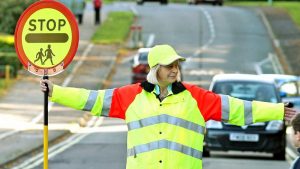References

Rules 105-109 of the Highway Code state:
Rule 105
You MUST obey signals given by police officers, traffic officers, traffic wardens (see ‘Signals by authorised persons‘) and signs used by school crossing patrols.
Rule 106
Police stopping procedures. If the police want to stop your vehicle they will, where possible, attract your attention by
- flashing blue lights, headlights or sounding their siren or horn, usually from behind
- directing you to pull over to the side by pointing and/or using the left indicator.
You MUST then pull over and stop as soon as it is safe to do so. Then switch off your engine.
Rule 107
Driver and Vehicle Standards Agency officers have powers to stop vehicles on all roads, including motorways and trunk roads, in England and Wales. They will attract your attention by flashing amber lights
- either from the front requesting you to follow them to a safe place to stop
- or from behind directing you to pull over to the side by pointing and/or using the left indicator.
It is an offence not to comply with their directions. You MUST obey any signals given (see ‘Signals by authorised persons‘).
Rule 108
Traffic officers have powers to stop vehicles on most motorways and some ‘A’ class roads, in England only. If traffic officers in uniform want to stop your vehicle on safety grounds (e.g. an insecure load) they will, where possible, attract your attention by
- flashing amber lights, usually from behind
- directing you to pull over to the side by pointing and/or using the left indicator.
You MUST then pull over and stop as soon as it is safe to do so. Then switch off your engine. It is an offence not to comply with their directions (see ‘Signals by authorised persons‘).
Rule 109
Traffic light signals and traffic signs. You MUST obey all traffic light signals (see ‘Light signals controlling traffic‘) and traffic signs giving orders, including temporary signals & signs (see ‘Traffic signs‘). Make sure you know, understand and act on all other traffic and information signs and road markings (see ‘Traffic signs‘, ‘Road markings‘ and ‘Vehicle markings‘).
Rule 286 of the Highway Code states:
If you are involved in a collision which causes damage or injury to any other person, vehicle, animal or property, you MUST
- stop
- give your own and the vehicle owner’s name and address, and the registration number of the vehicle, to anyone having reasonable grounds for requiring them
- if you do not give your name and address at the time of the collision, report it to the police as soon as reasonably practicable, and in any case within 24 hours.















